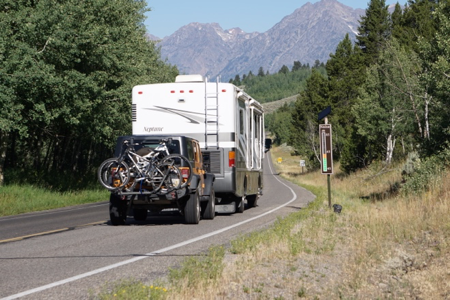Ecosystem services provided by soundscapes link people and wildlife: Evidence from mitigation studies in a protected natural area
Abstract
A growing body of evidence suggests that traffic noise negatively affects wildlife. Protected natural areas are not free from noise exposure, both external to and within park boundaries. Natural soundscapes are important in many aspects of animal life histories, for increasing positive visitor experiences, and for providing psychological ecosystem services. To examine the use of signs as an effective traffic noise mitigation strategy, we experimentally altered speed limits from 45 mph to 25 mph, with additional educational signage, along the Oxbow Bend traffic corridor in Grand Teton National Park, USA. We continuously recorded sound levels between alternating week-long blocks while conducting avian point counts at each station. We detected 2,217 individuals of 48 species across all stations throughout the study. To assess visitor experiences with the soundscapes and visitor attitudes towards sign use and management strategies, we conducted stated-choice intercept surveys along a park turnout within the experimental corridor. We administered 471 surveys at an 82% response rate. Future data will evaluate impacts of traffic noise on avian abundance and distributions, visitor attitudes towards mitigation strategies, and the potential coupling between human and natural systems via the soundscape.
Featured photo from Figure 2 in report.

